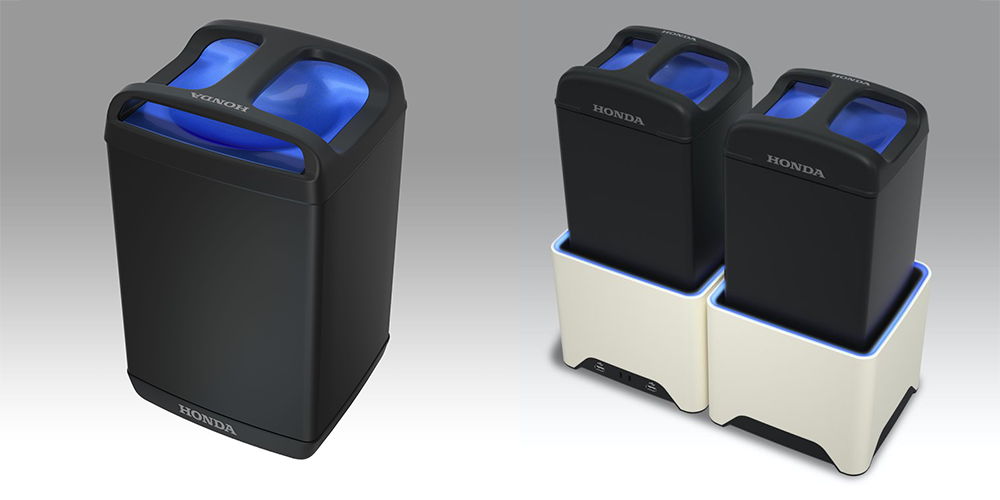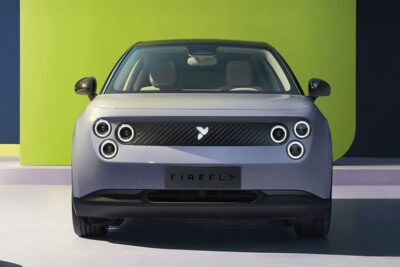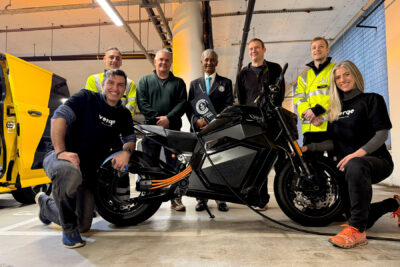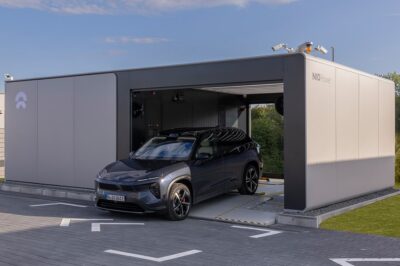Major motorcycle makers to standardise battery swaps
Honda, Yamaha, KTM and Piaggio have founded a ‘Swappable Batteries Consortium for Motorcycles and Light Electric Vehicles’. Starting in May, motorcycle makers want to define replaceable battery system standards for use in L-category vehicles.
++ This article has been updated. Kindly continue reading below. ++
Category L includes all mopeds and motorbikes and quads, and other small vehicles with 3 or 4 wheels. In their press release, the partners also name the Paris Climate Accord as the reason for the new consortium to come into being.
The companies believe “that the availability of a standardised swappable battery system would both promote the widespread use of light electric vehicles and contribute to more sustainable life-cycle management of batteries used in the transport sector.”
What is more, the manufacturers say they want to “try to answer customers’ main concerns regarding the future of electromobility. In other words, more range, shorter charging times and lower costs for vehicles and infrastructure.
LEV advocates have long called for swappable battery systems because motorcycles and mopeds lend themselves to standardisation more easily. A standard battery would not necessarily affect the design too much. Plus, it would indeed extend the range of any light EV considerably if the network of swapping stations were sufficiently rolled out. Specialised makers such as Gogoro have rolled out battery swapping systems already, primarily for sharing services. Based here in Berlin, micromobility provider Tier is improving the sustainability of batteries for scooters by means of battery swapping stations and battery recycling with Northvolt.
Executive Officer Takuya Kinoshita from Yamaha also stressed his belief that “the Consortium holds great significance not just for Europe but the world.”
Yamaha has been in the field early on and pioneered pedelecs in Europe in the 1990ies, now known as EPACs. They recently strengthened their EU business as they moved services to the continent and launched a new e-drive with Mahle.
For Honda, Noriaki Abe, Managing Officer, Motorcycle Operations, promoted it as “an area to explore cooperation with other manufacturers”. At the same time, the company had shown a battery swap system at the 2018-CES as pictured.
Also, KTM – not to be mixed up with the bicycle branch – has wanted to get into electric motorcycles for some time. The Austrian motorcycle manufacturer announced a 500-million-euro investment to develop light electric motorcycles in 2018 to run until 2023. Together with Piaggio, they are also part of the EU project RESOLVE that developed LEV technologies two years ago.
Whether these findings will affect the yet-to-be-developed standards is unclear at this stage, as are further technical specifications.
For now, Honda, Yamaha, KTM and Piaggio are looking to work closely with stakeholders and national, European and international standardisation bodies. They also hope for others to join the initiative before taking up activities in May 2021.
Update 08 September 2021:
Honda, Yamaha, KTM and Piaggio have now signed the contracts for the light electric vehicle interchangeable battery consortium announced in March. Other interested companies will be invited to join. The aim of the consortium is to develop solutions to customers’ concerns about the future of electric mobility, such as range, charging time and infrastructure, and cost.
Pierer Mobility AG, to which KTM belongs, also claims to have invested 20 million euros in an almost 8,000 square metre “competence centre for e-mobility” in Anif near Salzburg. All R&D activities focused on electric mobility have also been transferred to a separate company, KTM Forschungs & Entwicklungs GmbH (KTM R&D GmbH). This is intended to ensure “rapid progress in development”. Accordingly, KTM F&E GmbH has also signed the consortium agreement.
“Together with our partners, we will work on developing a swappable battery system for vehicles in the low-voltage range (48V) with up to 11kW power, based on international technical standards,” says Stefan Pierer, CEO of Pierer Mobility AG. “We look forward to contributing to ensuring that electrically powered two-wheelers will continue to play a significant role in the future of urban and extra-urban mobility.”
Update 16 September 2022:
The Swappable Batteries Motorcycle Consortium (SBMC), founded in September 2021 by Honda, KTM, Piaggio and Yamaha, has already grown to 21 members. The SBMC aims to accelerate the adoption of swappable battery systems for light e-vehicles by developing and promoting new common technical specifications for global and open standardisation. The current members are, in alphabetical order: AVL, Ciklo, Fivebikes, Forsee Power, Hioki, Honda, Hyba, Jama, Kawasaki, KTM, Kymco, Niu, Piaggio, Polaris, Roki, Samsung, Sinbon, Sumitomo Electric, Suzuki, Swobbee, Vitesco, VeNetWork and Yamaha.
global.honda, yamaha-motor.com, piaggiogroup.com, pierermobility.com (both update I), sb-mc.net (update II)





1 Comment